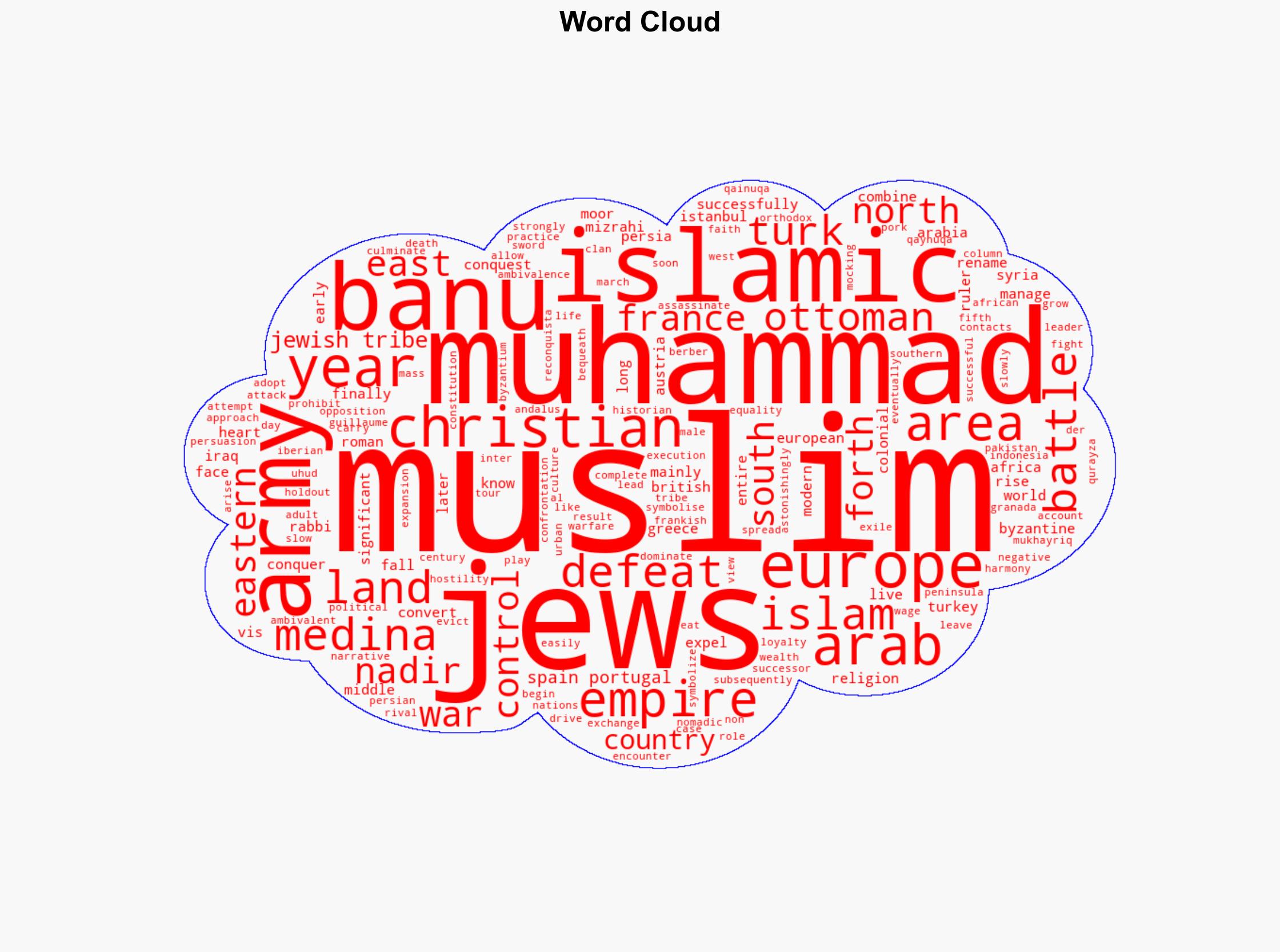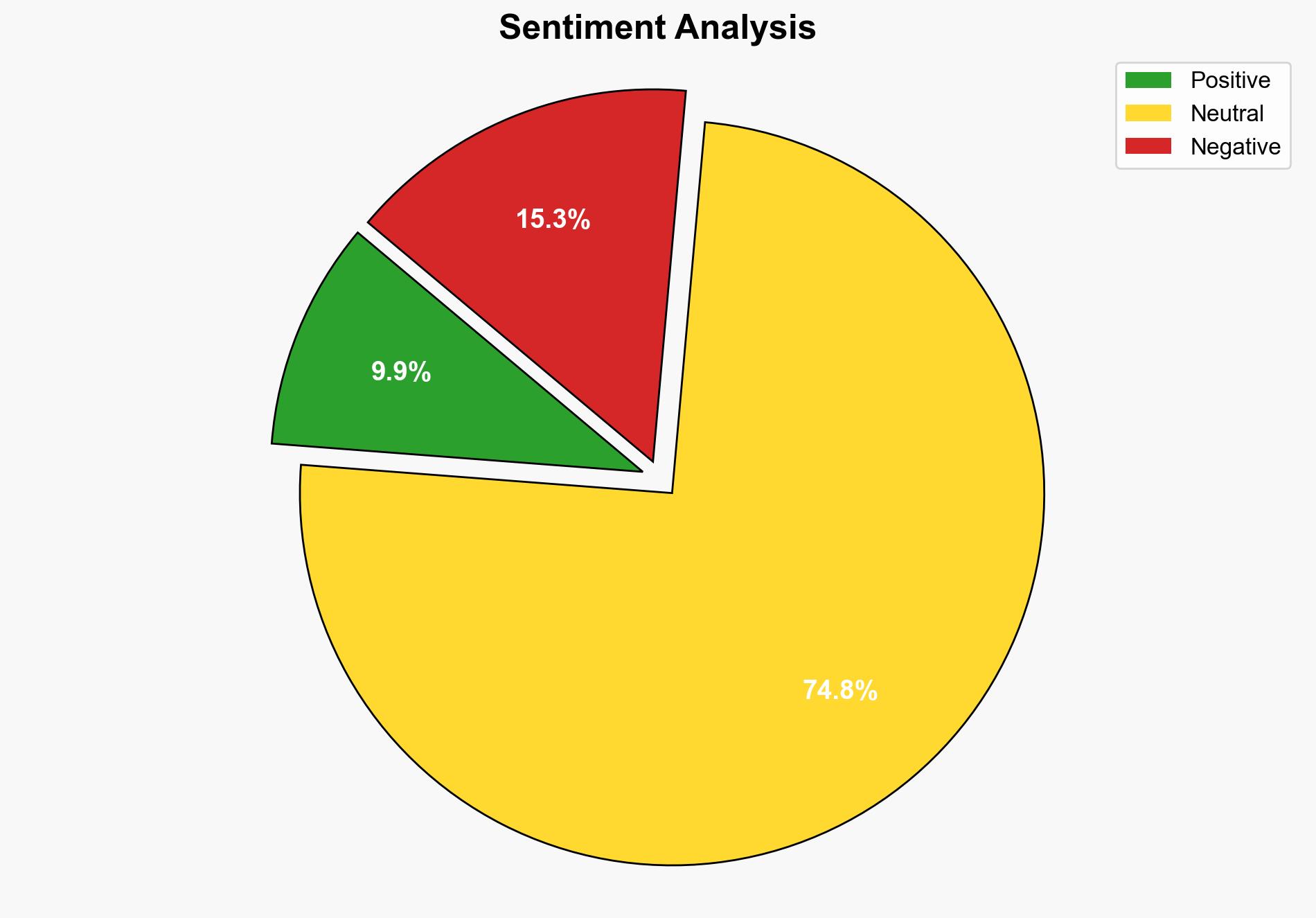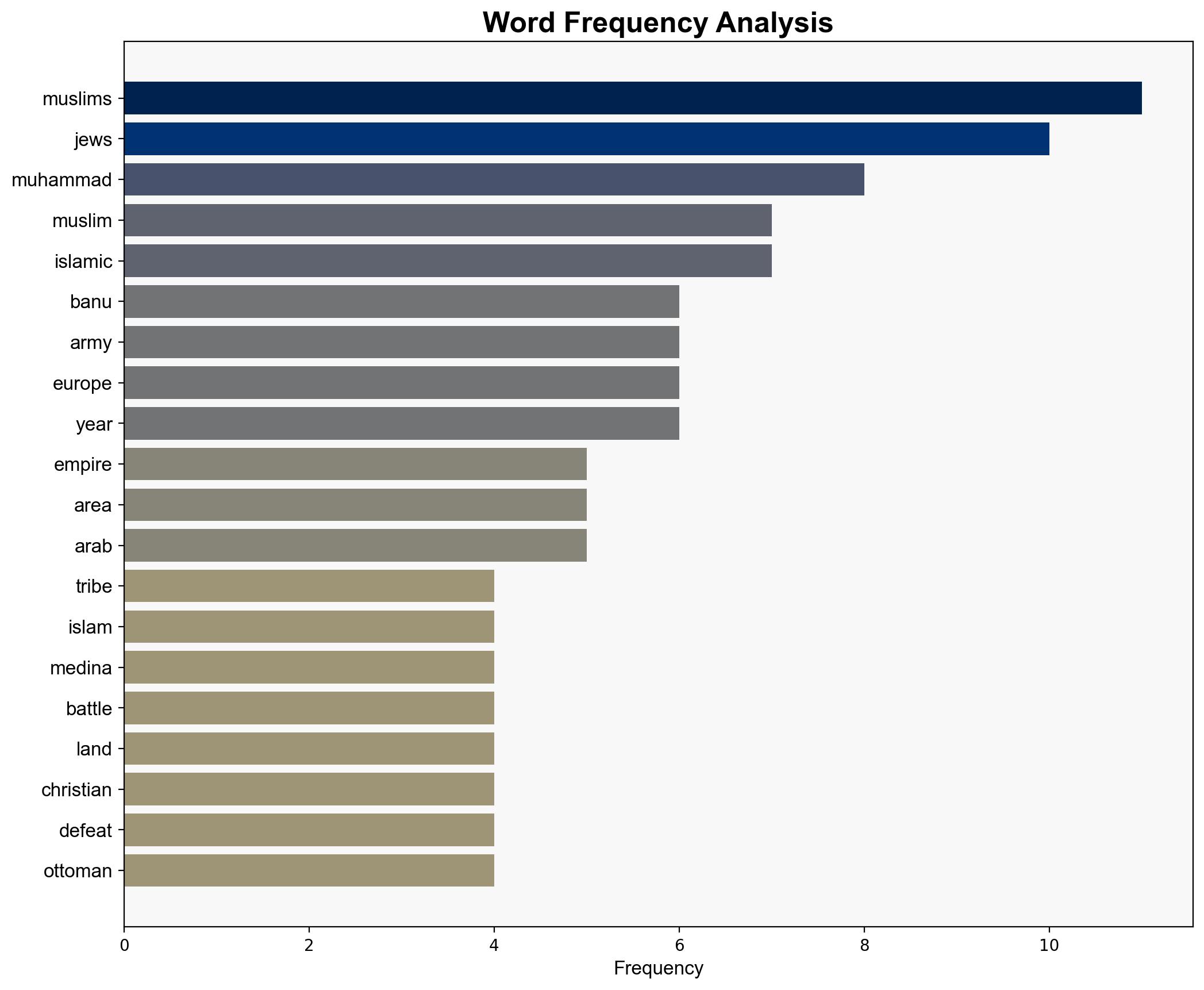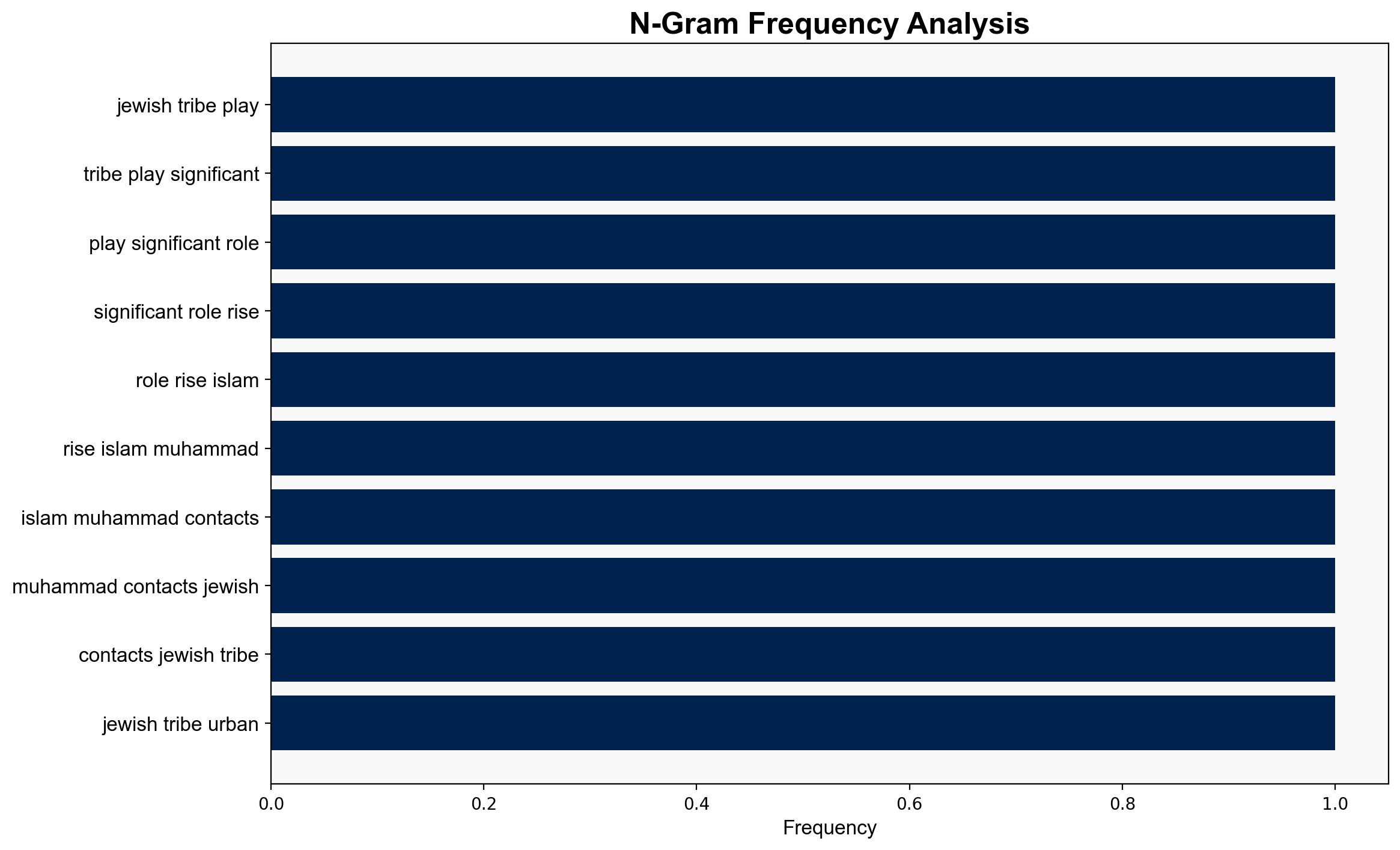Islamic vs Judeo-Christian and Greco-Roman worlds – Israelnationalnews.com
Published on: 2025-08-18
Intelligence Report: Islamic vs Judeo-Christian and Greco-Roman worlds – Israelnationalnews.com
1. BLUF (Bottom Line Up Front)
The analysis suggests two primary hypotheses regarding the historical and ongoing interactions between Islamic and Judeo-Christian/Greco-Roman worlds. The hypothesis that Islamic expansion was primarily driven by military conquest and political strategy is better supported by historical evidence. However, the role of cultural and religious integration also played a significant part. Confidence in this assessment is moderate due to historical complexities and potential biases in source material. Recommended action includes fostering interfaith dialogue and historical education to mitigate cultural tensions.
2. Competing Hypotheses
1. **Hypothesis A**: Islamic expansion was primarily driven by military conquest and political strategy, with religious and cultural integration as secondary factors.
2. **Hypothesis B**: Islamic expansion was significantly influenced by cultural and religious integration, with military conquest as a secondary factor.
Using ACH 2.0, Hypothesis A is more strongly supported by historical accounts of military campaigns and political maneuvers, such as the Battle of Tours and the fall of Constantinople. Hypothesis B is supported by instances of cultural assimilation and religious tolerance, such as the Constitution of Medina and interactions with Jewish tribes.
3. Key Assumptions and Red Flags
– **Assumptions**: Hypothesis A assumes that military and political factors were the primary drivers of Islamic expansion. Hypothesis B assumes cultural integration played a more significant role.
– **Red Flags**: Potential bias in historical sources, particularly those emphasizing military aspects over cultural ones. The narrative may overlook the complexity of religious dynamics and the role of non-military factors.
– **Blind Spots**: Limited consideration of the socio-economic factors influencing Islamic expansion and the internal diversity within Islamic societies.
4. Implications and Strategic Risks
– **Patterns**: Historical patterns of conflict and cooperation between Islamic and Judeo-Christian/Greco-Roman worlds continue to influence contemporary geopolitical dynamics.
– **Cascading Threats**: Misinterpretations of historical interactions could exacerbate current religious and cultural tensions.
– **Potential Escalation**: Increased polarization could lead to geopolitical instability, impacting economic and security interests globally.
5. Recommendations and Outlook
- Promote interfaith and intercultural dialogue to address historical grievances and foster mutual understanding.
- Encourage historical education that includes diverse perspectives to reduce biases and misconceptions.
- Scenario-Based Projections:
- Best Case: Enhanced cultural understanding leads to improved diplomatic relations and reduced tensions.
- Worst Case: Historical grievances fuel further conflict and geopolitical instability.
- Most Likely: Ongoing tensions with periodic diplomatic efforts to address underlying issues.
6. Key Individuals and Entities
– Muhammad
– Rabbi Mukhayriq
– Banu Nadir tribe
– Banu Qurayza clan
– Islamic Ottoman Turks
7. Thematic Tags
national security threats, cybersecurity, counter-terrorism, regional focus





